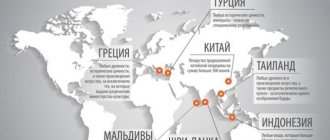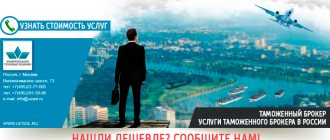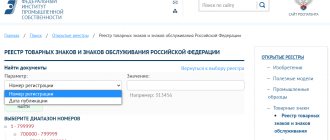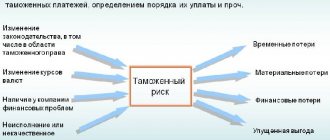In this article, we have collected the official rules: what documents and vaccinations a pet needs before flying, where to get them, what animals can and cannot be transported on airplanes.
Click to go to the desired section:
- What documents and vaccinations are needed to take a pet out of Russia?
- Which animals need permission from Rosselkhoznadzor for export and import and how to obtain it
- How to import an animal to Europe and other countries (with a self-test checklist)
- How to bring an animal to Russia
- Do I need to declare dogs, cats and other animals?
- What is a CITES permit and who needs to get one?
- What documents are needed to fly within Russia?
- Which animals are prohibited from being transported on airplanes and what to do if yours is one of them
- Is it possible to transport puppies and kittens by plane - in Russia and abroad?
How to take a pet abroad
Before flying abroad, you need to take into account the rules of two countries: the point of export and the point of entry.
If the journey begins in Russia, first check how to properly export an animal from our country and what is required for import into another.
To return with a pet from abroad to your homeland, find out the rules in reverse order: how to take a pet from another country and bring it to Russia.
Export of animals from Russia
Dogs and cats
You can export your pet dogs and cats
Documents needed:
1) International veterinary passport , which contains notes on microchipping, vaccinations and deworming treatment. You can get a veterinary passport at the veterinary clinic at the same time as microchipping or vaccinations.
• Microchip implantation . Identification of an animal using a microchip is optional in Russia, but microchipping is required to enter most other countries. Microchipping must be done strictly before rabies vaccination, otherwise the animal will not be allowed into Europe. The process is quick and painless: a capsule the size of a grain of rice is inserted into the pet’s withers. A sticker with a barcode and a 15-digit microchip code is pasted into the veterinary passport, and information about the animal is entered into the database.
For most countries, the chip must comply with the ISO 11784 / 11785 standard. If your destination country has a different standard, you will need to carry a suitable scanner with you to read it.
According to European rules, a stamp is also suitable for identification - but only if they were made before July 3, 2011 and are legible. In this case, the animal does not need to be chipped.
• Rabies vaccination : If your pet has not been vaccinated against rabies within the last 12 months, then the vaccination must be done no later than 20 days before the date of border crossing. Please note that the host country may have different rules: in the EU, for example, it is 21 days after the initial vaccination. Choose a vaccine that is recognized in the desired country, for example, Nobivac. Without a rabies vaccination, it will not be possible to take an animal abroad.
In addition to vaccination against rabies, dogs need vaccinations against distemper, hepatitis, viral enteritis, parvo- and adenovirus infections, leptospirosis; cats - from panleukopenia. Stickers about each vaccination with the date, signature and stamp of the doctor are placed in the veterinary passport.
Both dogs and cats must be treated for worms. Animals may require different vaccinations and treatments to enter another country.
2) Veterinary certificate form No. 1 . You need to get it from a state veterinary clinic within 5 days before your trip. Here is a list of suitable clinics in Moscow and St. Petersburg.
What is needed to obtain a veterinary certificate for a cat or dog :
- veterinary passport with chipping and vaccination records,
- results of stool analysis for helminths. If the passport contains a note about deworming, certified by a doctor’s seal, then theoretically no analysis is required,
- clinical examination, during which the doctor will confirm that the animal is healthy,
- for cats: fluorescent diagnostics is when the animal’s skin, fur and claws are examined under the light of a Wood’s lamp to check for lichen and other fungal diseases.
Certificate No. 1 is valid for 5 days , that is, you must fly within this time. It is worth contacting the veterinary station in advance, so that it does not turn out that additional vaccinations or treatments are needed to issue a piece of paper, and you no longer have time.
Before departure, at the airport veterinary service, certificate No. 1 will be exchanged for veterinary certificate form No. 5a. If you are flying to Europe, you will also be given an EU veterinary certificate (European certificate). Certificate 5a is not asked for abroad; it is needed to return home. A European certificate is needed to enter Europe. To speed up the process yourself, and only assure at the airport. Just in case, take several copies, including blank ones.
If you are flying to Belarus, Armenia, Kazakhstan or Kyrgyzstan , then instead of certificate form No. 1, receive a veterinary certificate of the Customs Union (form No. 1). There is no need to change it before departure.
If a dog or cat is traveling without an owner or you are going to sell them abroad , you still need a permit for export.
A certificate from the RKF stating that the dog has no breeding value is not needed either for issuing certificate Form No. 1 or for the flight.
Everything except dogs and cats
Other animals (rodents, birds, invertebrates and others) are exported with permission from Rosselkhoznadzor, except if you are traveling to Belarus, Armenia, Kazakhstan or Kyrgyzstan. Otherwise, the removal scheme is the same as for dogs and cats.
That is, for all pets, excluding dogs and cats, the following documents will be required:
- veterinary passport. In addition to animals for which they are not issued either in Russia or in the country of entry - for example, hamsters and guinea pigs,
- veterinary certificate form No. 1,
- permission.
In this case, it is imperative to comply with the veterinary requirements of both countries and marks about this must appear in the documents. For example, in Russia, birds will require vaccination against avian influenza or the result of an avian influenza test, as well as tests for psittacosis and salmonellosis. You can find out exactly the Russian requirements for exporting your pet when you apply for a certificate at the state veterinary station, and they will also be written in the permit.
If your animal is rare and its species is endangered, to transport it, in addition to the veterinary passport and Form 1 certificate, you may need a CITES permit.
Permission from Rosselkhoznadzor
You need permission from Rosselkhoznadzor if:
- you bring more than two dogs or cats to Russia;
- you import into Russia up to five pieces of any other animals, except cats and dogs;
- you export animals other than dogs or cats from Russia in any quantity.
There are two types of permission from Rosselkhoznadzor for the import and export of animals:
1) A “general” veterinary permit in form No. 1 is issued once a year and is valid for everyone. Check on the Rosselkhoznadzor website to see if your country of entry/exit and your animal are on the list. If found, then you do not need to obtain individual permission.
For example, in 2021, with a general permit, you can import from Greece to Russia from 3 to 5 dogs or up to five guinea pigs, canaries, meerkats or rats (there are more permitted animals, we give some as an example).
2) An individual permit is needed if a general permit has not been issued for your pet. An individual veterinary permit is made in the Argus veterinary electronic system.
First you need to gain access to the system. Send a telegram and in a few days you will receive your login and password by email. Or obtain your login information in person from the veterinary department.
Then fill out an application to import or export an animal, wait for it to be approved, and print out the permit. If you are exporting an animal from Russia temporarily and plan to return, then in the “Purpose” column indicate “For non-commercial use with return import/export.” If you plan to travel several times, indicate in your application the number of animals according to the number of trips: customs officers will deduct one each time. The permit is valid for the entire calendar year.
Features of issuing a temporary import permit
The need to obtain a permit is caused by the requirements of the legislator. New amendments came into force, which established the procedure for issuing opinions. Such documents must confirm the compliance of the technical parameters of radio-electronic devices that are imported into the Russian Federation.
Independent experts must establish that the equipment has proper technical characteristics and conditions of use. These requirements can be verified by obtaining a conclusion from the RFC after an instrumental study in laboratory conditions.
To obtain a temporary import permit from Roskomnadzor, you must send a request to government agencies justifying these actions. The document will be issued for a period of up to six months. After the end of the six-month period, the organizer of temporary import must remove the goods beyond the customs border of the Russian Federation. The legislator allows the import of up to 6 sets of devices.
List of documents to request permission
To obtain approval from government services for the temporary import of products into the Russian Federation, you will need to collect and send the following documents to the Roskomnadzor office:
- Detailed description of imported devices
- HS Code
- Information about the importing company
- Purpose of importing equipment with explanation and confirmation
After checking the designated documents, officials issue the necessary permits for radio-electronic equipment and high-frequency devices for civilian use. There is no state fee required to obtain them.
You can send us an application for a temporary import permit from Roskomnadzor
About the author Tatyana Pechenina
Certification Expert
Importing an animal into another country
In addition to the rules of your country for exporting an animal, you must fulfill the veterinary requirements of the country of entry. Animals are usually not allowed on connecting flights, but if you do, and you leave the transit zone at an intermediate airport, you will also have to comply with the requirements of the third country.
You can find out exactly the veterinary requirements for import at the consulate or official veterinary authority of the desired country. Rules for dogs and cats are usually published on the website; for others you will have to check by email. Be sure to indicate which country you are entering from - requirements for importing from different countries differ. To get your bearings, you can first look at the requirements on the Pettravel.com website, but then be sure to double-check the data from official sources.
Checklist of what to pay attention to when exporting an animal abroad:
• Is it possible to import an animal? Domestic cats, dogs and ferrets are allowed into most countries in the world. But there are exceptions. For example, ferrets will not be allowed into California, Washington, Hawaii and New Zealand, where they are prohibited. Many places, including the UAE, Singapore, Denmark and Spain, prohibit entry for dangerous breeds of dogs: pit bull terriers, Tosa Inu, Dogo Argentino, American Staffordshire terriers, Neapolitan mastiffs, Brazilian Fila and others.
Birds, fish, snakes, rodents and turtles are usually imported with additional documents - including CITES permits.
It happens that animals can only be imported from certain countries, as in Australia, only through certain airports and border crossings, or only on licensed airlines, as in the UK.
• Does the animal need to be microchipped? As a rule, it is necessary, but the current rules should be clarified.
A rabbit is given a microchip
• How many animals can you take with you? The number of pets allowed for import depends on the country of entry. Norway allows five cats per person, but China only allows one.
• What vaccinations, treatments and tests do pets need to fly ? The most important vaccination is against rabies. To enter Europe, the first rabies vaccination must be given after microchipping, but no later than 21 days before departure. There is no need to wait 21 days after a second vaccination, provided that it was administered when the previous one has not yet expired.
A bunch of countries, including all European ones, require testing for rabies antibodies for dogs, cats and ferrets if the animal comes from countries that are unaffected by this disease or from places where there is not enough statistical data on the topic. Russia is not one of these, therefore, when traveling from our country to Bulgaria, Spain, Finland and other EU countries, a test for rabies antibodies is not needed. This is confirmed by EU Regulation No. 577/2013 and the official response of the European Commission.
Find out the exact list of vaccinations and treatments required to enter the country. For example, 1–5 days before entering Finland, Norway and the UK, the dog must be dewormed. To travel to the UAE, the cat must be vaccinated not only against panleukopenia, but also against rhinotracheitis and calicivirosis.
Anna Kovalenko , travel organizer:
“Once in Tbilisi, someone told us that they met a young man with a camel in the city. Camel in Tbilisi?! They said that his Iranian owner had been traveling with the camel for 3 months, passed through Armenia to Georgia and was going to continue in Russia. We all laughed together, and a week later we went by bus to Vladikavkaz. How surprised we were when the story turned out to be real! We were driving through Stepantsminda and... we noticed a camel by the river. We stopped at a wigwam-type hut - and the Iranian said that he was not allowed across the border because the camel did not have some kind of permit.”
• Will the animal be quarantined? Even if all veterinary requirements are met, it happens that the animal is still quarantined. For example, when flying from Russia to Singapore, a dog faces 30 days of captivity. The rules are even stricter in New Zealand. You cannot import an animal there directly from Russia: first it must spend six months in one of the rabies-free countries, for example, Germany, and then serve at least 10 days of quarantine in New Zealand. The owner of the animal pays for quarantine.
• Do you need an import permit - like the one issued by Rosselkhoznadzor in our country? For example, to import a dog or cat into Thailand, you need to send an email to the veterinary service no later than 15 days before departure and receive permission to transport the pet within a week.
• What other documents are needed. For example, to import animals into the EU before departure (that is, still in Russia), you need to have a European certificate certified . This is both a veterinary and customs document and a mandatory condition for entry into the European Union if the animal does not have a blue EU passport, which can only be obtained in Europe: those sold in our veterinary stores are not suitable. You need to enter the EU with this certificate within 10 days, and you can travel between EU countries for 4 months from the date of issue of the certificate, provided that the rabies vaccination is valid. Read the official explanations on how to fill out the European certificate.
A new procedure for importing medical devices for state registration purposes comes into force
From January 1, 2021, a new procedure for the import of medical devices into the Russian Federation for the purposes of state registration comes into force.
Although the new rules do not make fundamental changes to the procedure for importing medical devices, the innovations should eliminate the ambiguities of the current procedure and simplify it.
In particular, in the new order:
- its scope of application is specified;
- an electronic form of application and import permit has been established;
- The scope of information provided in the application for a permit has been expanded; And
- The validity period of the import permit has been extended.
The new procedure was adopted within the framework of the “regulatory guillotine” concept and is aimed at improving the process of obtaining permission to import medical devices for the purposes of state registration. Market participants need to pay attention to the innovations and take them into account when submitting import applications after January 1, 2021.
Scope of application
Similar to the current procedure, the new rules establish the procedure for obtaining permission to import medical devices for the purposes of state registration.
At the same time, the new rules specify that they apply not only to cases of import for the purposes of initial state registration, but also to the case of the need to import a medical device for the purpose of making changes to the registration dossier.
The new rules also specifically emphasize that if the place of production of a medical device is located outside the Russian Federation, then obtaining a permit is mandatory, even if the manufacturer is registered in Russia.
In addition, to simplify the software registration process, the need to obtain authorization for software that is a medical device has been eliminated.
Electronic form
Unlike the current rules, the new procedure provides for interaction between the applicant and the authorized body in electronic form.
An application for an import permit must be signed with an enhanced qualified electronic signature and submitted through the government services portal. If the decision is positive, the permit will be posted in the applicant’s personal account on the public services portal and in the Roszdravnadzor register.
Globally, this innovation should simplify interaction with Roszdravnadzor, but now the applicant will need an electronic signature to submit documents.
Contents of the statement
The new procedure imposes more requirements on the composition of the application submitted to obtain an import permit. Now, among other things, the application must contain information confirming the accreditation of the involved organizations to conduct toxicological, technical, clinical studies and tests.
Validity period of the permit
The new rules increase the validity period of an import permit: instead of six months, such a permit will be valid for one year, which will allow applicants to more flexibly structure the process of state registration of medical devices in Russia.
For more information, please contact CMS Russia experts Vsevolod Tyupa , Alexey Shadrin or your regular contact at CMS Russia.
Importing an animal to Russia
A dog or cat can be brought from abroad to Russia with one document - an international veterinary passport, provided that the pets are traveling with their owner, there are no more than two of them and they are not intended for sale. The passport must contain information about the vaccines administered with dates and a note about a clinical examination by an official veterinarian within the previous 5 days. Animals are not quarantined.
If a cat or dog does not have a passport that meets the requirements of the Eurasian Economic Union, or you are not 100% sure that the passport is suitable (for example, you bought a pet in China and received an international passport there), then they can be imported using certificate form No. 15 . Download it and complete all necessary marks with the government veterinarian.
If you initially left Russia with the animal, then you will already have certificate No. 5a , with which you can enter the Russian Federation instead of a veterinary passport and certificate No. 15.
Certificate 5a is valid for 90 days: if you return to Russia during this time, you do not need to do any vaccinations or treatments abroad. But, according to Russian rules, before the return flight, the veterinarian must certify that there have been no outbreaks of infectious diseases in the country of your travel. Most often, such a mark can be obtained from the airport veterinary service before departure, but it is better to find out in advance - ask on the spot on the day of arrival.
How to import animals if the 5a certificate is no longer valid
If certificate 5a has expired, then dogs and cats can be brought back using a passport, provided that a clinical examination was stamped within 5 days before entry, or using certificate No. 15.
After arriving in Russia, the certificate is exchanged at the airport veterinary service for a veterinary certificate of form No. 1 or a certificate of form No. 6.1, with which you can fly or travel further across Russia. If the animal enters only with a passport, then these documents will be issued additionally.
If there are 3 to 5 cats or dogs, or they are being imported for sale, or they are traveling without an owner (for example, you sent the animals with friends), then you will need permission from Rosselkhoznadzor.
For other animals and birds, including pet rabbits, ferrets, guinea pigs, hamsters, squirrels, chipmunks, chinchillas, parrots and canaries, you will need:
- permission from Rosselkhoznadzor;
- international veterinary passport or veterinary certificate in the form of the Eurasian Economic Union . Ferrets are usually given the same passports as dogs and cats. For rodents and other non-passported animals, you need to issue a certificate by downloading the required form from the EEC list. For fur animals, rabbits, dogs and cats, form No. 15 is suitable, for wild animals - No. 16. Form No. 41 is described strangely: for zoos and circuses, but it means any animals “born and raised in captivity or kept in captivity not less than 90 days”, that is, for many animals this certificate is needed. Which certificate is suitable (more precisely, what kind of animal yours is considered to be - wild, zoo, fur-bearing or, for example, laboratory) will be written in the permit from Rosselkhoznadzor. If you are still not sure, check with Rosselkhoznadzor.
All animals must comply with the veterinary requirements of the Eurasian Economic Union.
Dogs, cats, ferrets and other animals that potentially carry rabies must be vaccinated against the disease within the last 12 months, but no later than 20 days before travel. Dogs - also from canine distemper, hepatitis, viral enteritis, parvo- and adenovirus infections and leptospirosis; cats - from panleukopenia; minks and ferrets - from canine distemper, viral enteritis and pasteurellosis; rabbits - from myxomatosis, pasteurellosis and viral hemorrhagic disease.
You will read in the permit from Rosselkhoznadzor what other animals need to be treated and vaccinated against and whether they will have to be quarantined.
For example, fish and invertebrates (snails, spiders, crayfish and scorpions) can be imported into Russia only after quarantine for at least 30 days and examination by a veterinarian within 72 hours before travel.
wild animals are identified (that is, microchipped, ringed or tattooed) and quarantined for at least a month, during which they are tested for diseases depending on the type of animal. For an exact list of tests and vaccinations and other requirements, see the document of the Eurasian Economic Commission.
General legal acts
- Articles of the Code of Administrative Offenses of the Russian Federation, providing for liability for violations in the field of state veterinary supervision at the state border of the Russian Federation, as of December 8, 2016
- Articles of the Code of Administrative Offenses of the Russian Federation providing for liability for violations in the field of phytosanitary control at the state border of the Russian Federation
- Decree of the Government of the Russian Federation dated 04/08/2004 N 201 (as amended on 12/29/2017) “Issues of the Federal Service for Veterinary and Phytosanitary Surveillance”
- Decree of the Government of the Russian Federation of June 30, 2004 N 327 (as amended on April 11, 2018) “On approval of the Regulations on the Federal Service for Veterinary and Phytosanitary Surveillance”
- Order of the Federal Service for Veterinary and Phytosanitary Surveillance dated May 2, 2012 No. 220 “On the list of officials of the Federal Service for Veterinary and Phytosanitary Surveillance and its territorial departments authorized to draw up protocols on administrative offenses”
- Order of Rosselkhoznadzor dated October 17, 2016 N 744 (as amended on August 20, 2018) “On approval of the List of legal acts and their individual parts (provisions) containing mandatory requirements, compliance with which is assessed when Rosselkhoznadzor carries out state control (supervision) activities and its Procedure conducting"
Special legal acts
in the field of state veterinary supervision at the state border
- Unified rules of state veterinary supervision for international and interstate transportation of livestock cargo, approved by the Decision of the Intergovernmental Council for Cooperation in the Field of Veterinary Medicine of the CIS States dated November 5, 2003
- Rules for veterinary inspection of slaughter animals and veterinary and sanitary examination of meat and meat products, approved by the Main Directorate of Veterinary Medicine of the USSR Ministry of Agriculture on December 27, 1983
- Veterinary and sanitary rules for the collection, disposal and destruction of biological waste, approved by the Chief State Veterinary Inspector of the Russian Federation on December 4, 1995 No. 13-7-2/469
- Instructions for veterinary branding of meat, approved by the Ministry of Agriculture and Food of Russia on April 28, 1994
- Agreement on cooperation in the field of veterinary medicine between the Republic of Belarus and other CIS countries, Moscow, 03/12/1993
- Law of the Russian Federation dated May 14, 1993 No. 4979-1 “On Veterinary Medicine”
- Federal Law of January 2, 2000 No. 29-FZ “On the quality and safety of food products”
- Decree of the Government of the Russian Federation of October 29, 1992 No. 830 “On the state veterinary service of the Russian Federation for the protection of the territory of Russia from the introduction of infectious animal diseases from foreign countries”
- Decree of the Government of the Russian Federation of September 29, 1997 No. 1263 “On approval of the Regulations on the examination of low-quality and dangerous food raw materials and food products, their use or destruction”
- Decree of the Government of the Russian Federation of December 21, 2000 No. 987 “On state supervision and control in the field of ensuring the quality and safety of food products”
- Decree of the Government of the Russian Federation of March 24, 2006 No. 159 “On the application of veterinary measures when importing live animals and products of animal origin into the customs territory of the Russian Federation”
- Order of the Ministry of Agriculture of Russia dated October 6, 2008 No. 453 “On approval of veterinary rules for the import (export) into the territory of the Russian Federation, processing, storage, transportation, sale of hydrobionts, fish, seafood and products made from them”
- Order of the Ministry of Agriculture of Russia dated November 7, 2011 N 404 “On approval of the administrative regulations by the Federal Service for Veterinary and Phytosanitary Surveillance for the provision of public services for issuing permits for the import into and export from the Russian Federation, as well as transit through its territory of animals and products of animal origin, medicines for veterinary use, feed and feed additives for animals"
- Order of the Ministry of Agriculture of Russia dated December 27, 2016 No. 589 “On approval of veterinary rules for organizing work on the preparation of veterinary accompanying documents, the procedure for issuing veterinary accompanying documents in electronic form and the procedure for issuing veterinary accompanying documents on paper”
in the field of quarantine phytosanitary control at the state border
- INTERNATIONAL CONVENTION ON QUARANTINE AND PLANT PROTECTION, Rome, 1999.
- INTERNATIONAL STANDARD FOR PHYTOSANITARY MEASURES No. 1 “PHYTOSANITARY PRINCIPLES”
- INTERNATIONAL STANDARD FOR PHYTOSANITARY MEASURES No. 2 “PHYTOSANITARY RISK ANALYSIS FRAMEWORK”
- INTERNATIONAL STANDARD FOR PHYTOSANITARY MEASURES No. 3 “BIOLOGICAL CONTROL AGENTS”
- INTERNATIONAL STANDARD FOR PHYTOSANITARY MEASURES No. 4 “REQUIREMENTS FOR ESTABLISHING FREE ZONES”
- INTERNATIONAL STANDARD FOR PHYTOSANITARY MEASURES No. 5 “GLOSSARY OF PHYTOSANITARY TERMS”
- INTERNATIONAL STANDARD FOR PHYTOSANITARY MEASURES No. 6 “SUPERVISION GUIDELINES”
- INTERNATIONAL STANDARD FOR PHYTOSANITARY MEASURES No. 7 “PHYTOSANITARY CERTIFICATION SYSTEM”
- INTERNATIONAL STANDARD FOR PHYTOSANITARY MEASURES No. 8 “DETERMINATION OF PEST STATUS”
- INTERNATIONAL STANDARD FOR PHYTOSANITARY MEASURES No. 9 “ELIMINATION OF PESTS”
- INTERNATIONAL STANDARD FOR PHYTOSANITARY MEASURES No. 10 “ESTABLISHMENTS OF OPEN SITES”
- INTERNATIONAL STANDARD FOR PHYTOSANITARY MEASURES No. 11 “PHYTOSANITARY RISK ANALYSIS”
- INTERNATIONAL STANDARD FOR PHYTOSANITARY MEASURES No. 12 “PHYTOSANITARY CERTIFICATES”
- INTERNATIONAL STANDARD FOR PHYTOSANITARY MEASURES No. 13 “NONCONFORMITY NOTIFICATION”
- INTERNATIONAL STANDARD FOR PHYTOSANITARY MEASURES No. 14 “USE OF INTEGRATED MEASURES IN A SYSTEM APPROACH TO PEST RISK MANAGEMENT”
- INTERNATIONAL STANDARD FOR PHYTOSANITARY MEASURES No. 15 “WOOD PACKAGING MATERIAL”
- INTERNATIONAL STANDARD FOR PHYTOSANITARY MEASURES No. 16 “REGULATED NON-QUARANTINE FACILITIES”
- INTERNATIONAL STANDARD FOR PHYTOSANITARY MEASURES No. 17 “PEST ALERTS”
- INTERNATIONAL STANDARD FOR PHYTOSANITARY MEASURES No. 18 “GUIDELINES FOR IRRADIATION”
- INTERNATIONAL STANDARD FOR PHYTOSANITARY MEASURES No. 19 “GUIDE TO LISTS OF ORGANISMS”
- INTERNATIONAL STANDARD FOR PHYTOSANITARY MEASURES No. 20 “IMPORT REGULATIONS”
- INTERNATIONAL STANDARD FOR PHYTOSANITARY MEASURES No. 21 “PHYTOSANITARY RISK ANALYSIS”
- INTERNATIONAL STANDARD FOR PHYTOSANITARY MEASURES No. 22 “REQUIREMENTS FOR THE ESTABLISHMENT OF ZONES WITH LOW NUMBER OF PESTS”
- INTERNATIONAL STANDARD FOR PHYTOSANITARY MEASURES No. 23 “INSPECTION GUIDELINES”
- INTERNATIONAL STANDARD FOR PHYTOSANITARY MEASURES No. 24 “ESTABLISHMENT OF PHYTOSANITARY MEASURES”
- INTERNATIONAL STANDARD FOR PHYTOSANITARY MEASURES No. 25 “TRANSIT CARGO”
- INTERNATIONAL STANDARD FOR PHYTOSANITARY MEASURES No. 26 “TRAPPING FRUIT FLIES”
- INTERNATIONAL STANDARD FOR PHYTOSANITARY MEASURES No. 27 “DIAGNOSTIC PROTOCOLS”
- INTERNATIONAL STANDARD FOR PHYTOSANITARY MEASURES No. 28 “PHYTOSANITARY TREATMENTS AGAINST PESTS”
- INTERNATIONAL STANDARD FOR PHYTOSANITARY MEASURES No. 29 “RECOGNITION OF PEST FREE AREA”
- INTERNATIONAL STANDARD FOR PHYTOSANITARY MEASURES No. 30 “ESTABLISHMENT OF ZONES WITH LOW NUMBER OF FRUIT FLIES”
- INTERNATIONAL STANDARD FOR PHYTOSANITARY MEASURES No. 31 “SAMPLING TECHNIQUES”
- INTERNATIONAL STANDARD FOR PHYTOSANITARY MEASURES No. 32 “CATEGORIZATION OF PRODUCTS”
- INTERNATIONAL STANDARD FOR PHYTOSANITARY MEASURES No. 33 “MATERIAL FOR MICROCLONAL PROPAGATION AND MINICUTUBERS OF POTATOES”
- INTERNATIONAL STANDARD FOR PHYTOSANITARY MEASURES No. 34 “ESTABLISHMENT OF PLANT QUARANTINE STATIONS AFTER IMPORTATION”
- INTERNATIONAL STANDARD FOR PHYTOSANITARY MEASURES No. 35 “PHYTOSANITARY RISK FROM FRUIT FLIES”
- INTERNATIONAL STANDARD FOR PHYTOSANITARY MEASURES No. 36 MEASURES FOR “PLANTING MATERIAL”
- INTERNATIONAL STANDARD FOR PHYTOSANITARY MEASURES No. 37 “DETERMINATION OF FRUIT HOST STATUS WITH RESPECT TO FRUIT FLIES”
- Decision of the Customs Union Commission dated June 18, 2010 N 318 (as amended on March 17, 2017) “On ensuring plant quarantine in the Eurasian Economic Union” (together with the “Regulations on the procedure for implementing quarantine phytosanitary control (supervision) at the customs border of the Eurasian Economic Union”, “Regulations on the procedure for implementing quarantine phytosanitary control (supervision) in the customs territory of the Eurasian Economic Union”)
- Decision of the Council of the Eurasian Economic Commission dated November 30, 2016 N 157 “On approval of the Unified Quarantine Phytosanitary Requirements for regulated products and regulated objects at the customs border and on the customs territory of the Eurasian Economic Union”
- Decision of the Council of the Eurasian Economic Commission dated November 30, 2016 N 158 “On approval of a unified list of quarantine objects of the Eurasian Economic Union”
- Decision of the Council of the Eurasian Economic Commission dated November 30, 2016 N 159 “On approval of the Common Rules and Standards for Ensuring Plant Quarantine in the customs territory of the Eurasian Economic Union”
- FEDERAL LAW OF 07.21.2014 No. 206-FZ “ON PLANT QUARANTINE”
- DECREE OF THE GOVERNMENT OF THE RF OF NOVEMBER 20, 2008 N 872 “ON APPROVAL OF THE RULES FOR IMPLEMENTING CONTROL DURING THE PASSAGE OF PERSONS, VEHICLES, CARGO, GOODS AND ANIMALS ACROSS THE STATE BORDER OF THE RUSSIAN FEDERATION”
- DECREE OF THE GOVERNMENT OF THE RF OF JULY 7, 2011 N 557 “ON DETERMINING CHECKPOINTS ACROSS THE STATE BORDER OF THE RUSSIAN FEDERATION INTENDED FOR IMPORTATION OF ANIMALS AND PRODUCTS OF ANIMAL ORIGIN INTO THE TERRITORY OF THE RUSSIAN FEDERATION FOOD, FEED, FEED ADDITIVES, MEDICINES FOR ANIMAL AND REQUIRED PRODUCTS (REQUIRED MATERIAL) , QUARANTINE CARGO)"
- DECREE OF THE GOVERNMENT OF THE RF OF SEPTEMBER 19, 2015 N 995 “ON APPROVAL OF THE RULES FOR IMPLEMENTATION BY CUSTOMS AUTHORITIES OF CONTROL OVER THE EXPORT OF GUARANTINE PRODUCTS FROM THE RUSSIAN FEDERATION”
- DECREE OF THE GOVERNMENT OF THE RF OF AUGUST 10, 2021 N 770 “ON APPROVAL OF THE REGULATIONS ON THE IMPLEMENTATION OF PEST RISK ANALYSIS”
- DECREE OF THE GOVERNMENT OF THE RF OF AUGUST 13, 2021 N 792 “ON THE PROCEDURE FOR IMPLEMENTING STATE QUARANTINE PHYTOSANITARY CONTROL (SUPERVISION) AT CHECKPOINTS THROUGH THE STATE BORDER OF THE RUSSIAN FEDERATION”
- ORDER OF THE MINISTRY OF AGRICULTURE DATED DECEMBER 29, 2010 N 456 “ON APPROVAL OF THE RULES FOR ENSURING PLANT QUARANTINE WHEN IMPORTING QUARANTINE PRODUCTS INTO THE TERRITORY OF THE RUSSIAN FEDERATION, AS WELL AS DURING ITS STORAGE, SHIPPING, TRANSPORTATION, TRANSPORTATION BOTKE AND USE"
- ORDER OF THE MINISTRY OF AGRICULTURE DATED DECEMBER 15, 2014 N 501 “ON APPROVAL OF THE LIST OF QUARANTINE FACILITIES”
- ORDER OF THE MINISTRY OF AGRICULTURE DATED JULY 13, 2021 N 293 “ON APPROVAL OF THE PROCEDURE FOR ISSUING A PHYTOSANITARY CERTIFICATE, RE-EXPORT PHYTOSANITARY CERTIFICATE, QUARANTINE CERTIFICATE”
- Order of the Ministry of Agriculture of Russia dated January 23, 2018 N 23 “On approval of the procedure for organizing monitoring of the quarantine phytosanitary state of the territory of the Russian Federation”
- ORDER OF THE MINISTRY OF COMMUNICATIONS OF THE RUSSIAN FEDERATION OF JUNE 18, 2003 N 36 “ON APPROVAL OF THE RULES FOR TRANSPORTATION BY RAILWAY OF GUARANTINE GOODS”
list of laboratories that allow laboratory tests to be carried out correctly
List of laboratories authorized by Rosselkhoznadzor to conduct laboratory tests of products of animal origin for the qualitative presence of antibiotic residues within the framework of state veterinary supervision
List of laboratories authorized by Rosselkhoznadzor to conduct laboratory tests of imported feed and feed additives for animals imported into the territory of the Russian Federation within the framework of state veterinary supervision
Unified register of certification bodies and testing laboratories (centers) of the Customs Union, located at
Register of testing laboratories carrying out work to confirm the conformity of the quality and safety of grain, cereals, mixed feed and components for their production, as well as by-products of grain processing, accredited by Rosselkhoznadzor
Do I need to declare my pet?
Most countries require dogs, cats and other pets to be declared. This must be done both at the exit and at the entrance. The owner of the animal passes through the red corridor and presents a customs declaration. To save time, you can fill it out in advance.
To leave Russia, you need a customs declaration, the form of which is available on the website of the Federal Customs Service. After all the formalities, one copy of the declaration will remain with you: when you return, hand it over to the customs officers along with the entry declaration. The information about the animal must match.
to enter Europe . In the red corridor, show the European certificate - this is a 2 in 1 document: both veterinary and customs.
The declaration form for entry into another country can be downloaded from the customs service website, obtained from the flight attendants during the flight or upon arrival in the red corridor. Take care of the copy that the customs officers give you: you will need it to fly out of the country.
Transporting an animal from the CITES list
CITES is the convention on international trade in endangered species of wild fauna and flora. It regulates the transport of rare species of animals, plants and their parts, for example, hunting trophies. If your pet is included in the CITES Appendices, then in addition to the standard set of documents, you will need a CITES permit.
Here is the official list of all animals in Latin from the CITES Appendices. If the animal is included in the strictest Annex I, then to transport it you will need to obtain two permits: in the country of departure for export and in the country of entry for import.
Appendix II animals often only require an export permit, but it is best to check the rules of the country of entry. For example, to import into Europe you cannot do without a second permit - an import permit.
For Annex III pets you will have to obtain a certificate of origin. Regardless of the type of CITES application, additional documentation may be required in the country of entry.
Article VII of the CITES convention lists exceptions. For example, Appendix I animals bred in captivity for sale are considered Appendix II species.
To obtain a permit abroad, you must apply to the national environmental authority. In Russia, permits for the export and import of animals from CITES Appendices I or II are issued by Rosprirodnadzor. The necessary documents are listed in Order No. 47 of the Ministry of Natural Resources of the Russian Federation. You can read what is required in practice and how the procedure goes in the reviews of experienced travelers. Here are stories about how a CITES permit was obtained for a turtle and the Venezuelan Amazon.
If your animal is not included in the CITES Appendices, but it is something exotic, and not just a cat, dog or ferret, it makes sense to go to the zoo and get a certificate on the official form about the species.
Suspension and termination of temporary import
The suspension of the temporary import procedure is carried out in the cases specified in Art. Art. 281 TK TS
- seizure of temporarily imported goods or their seizure in accordance with the legislation of the Russian Federation;
- placement of temporarily imported goods in a customs warehouse in accordance with paragraph 3 of Article 230 of the Labor Code of the Customs Union;
- at the request of the person who received a permit for temporary import, when placing temporarily imported goods, for which partial exemption from customs duties and taxes was applied, under other customs regimes that do not provide for the release of goods for free circulation.
The temporary import regime ends by: exporting goods from the territory of the country, releasing them into free circulation on the territory of the Russian Federation, placing them under a different customs regime.
What documents are needed to fly with an animal in Russia?
A veterinary passport is sufficient for dogs and cats to fly across Russia . It must contain a note about rabies vaccination (it is mandatory according to sanitary and veterinary rules), which was received no earlier than 12 months and no later than 20 days before departure. In addition, the pet must be treated for worms or there must be a test result for helminthiases obtained within a month before departure. There is no need to microchip the animal.
Just in case, call the nearest state veterinary hospital or the veterinary control of the airport from which you are going to fly, and find out if additional vaccinations, treatments and tests are needed - requirements may change due to outbreaks of infectious diseases.
Previously, to fly with a dog and a cat, you still had to obtain a veterinary certificate in form No. 1, but paragraph 16 of the Order of the Ministry of Agriculture dated December 27, 2021 canceled this requirement. At the same time, a veterinary certificate (form No. 1) is still needed if animals are taken to participate in an exhibition or if a pet is not flying with its owner.
For other animals, it is necessary to obtain a passport or veterinary certificate in Form No. 1 and, most importantly, to comply with the veterinary requirements of our country. Vaccinations, treatments and tests may be required. To find out what should be included in the accompanying document for a rabbit, canary and other pets, call the state veterinary station or the airport veterinary control.
Which animals can and cannot be transported on an airplane?
Typically, pet dogs and cats fly on airplanes without any problems. But some airlines prohibit the carriage of dogs with a flattened muzzle , such as pugs, bulldogs, boxers, Shih Tzus and Pekingese. Due to the structure of their nose, they can suffocate during the flight. For the same reason, cats of brachycephalic breeds with upturned noses (Burmese, Persian, exotic, Himalayan) are denied flights, but such a ban is less common.
Not all airlines allow you to take ferrets, hares, rabbits, turtles and birds with you, but you can still find a carrier. It’s much more difficult with rodents: almost no one carries them either in the cabin or in luggage. Among the rare carriers that are loyal to hamsters and guinea pigs are Finnair and Belavia. The chance of carrying reptiles, amphibians, reptiles or arthropods on an airplane is also close to zero.
The list of permitted and prohibited animals is usually clearly stated on the airline's website. For example, dogs, cats, birds (except raptors), fish and turtles will be allowed on board Vueling, and rodents, lagomorphs (for example, rabbits), mustelids (for example, ferrets), farm animals, birds of prey and reptiles will be refused carriage. If your pet is not on the list, call the airline and ask if it can be carried and under what conditions.
If the animal is on the prohibited list , all is not lost. Rodents, snakes, spiders and generally any animals that are not allowed in checked baggage or hand luggage can be sent as cargo, that is, unaccompanied baggage. This is how circuses and zoos transport animals, so you can take anyone - even a penguin, crocodile or salamander, the main thing is to prepare the documents and comply with the requirements for transportation. An example of transportation requirements can be found on the S7 cargo service website.
Is it possible to fly with puppies and kittens - in Russia and abroad?
In law
In Russia there are strict rules. The unified veterinary requirements of the EAEU prohibit the movement, export and import of dogs and cats that have not been vaccinated against rabies. In this case, the vaccination must be done no later than 20 days before departure.
In practice, this means that if a puppy or kitten has not yet been vaccinated against rabies due to its age, then it is impossible to take it abroad, import it into Russia and other EAEU countries, or even legally move from one city to another within the country. The first vaccination is usually given at 12 weeks, then another 20 days are waited until immunity is formed - and only then can you fly. If in doubt, read the letter from the Eurasian Economic Commission and the instructions from Rosselkhoznadzor with explanations.
In the European Union, the import of puppies, kittens and ferrets without vaccination against rabies is prescribed in EU Regulation No. 576/2013 . If there are no additional rules in an EU country, then under this regulation it is allowed to import animals without a rabies vaccination at all, if they are not yet 12 weeks old. At 12–16 weeks, you can go immediately after vaccination, rather than wait another 21 days. In both cases, one of the following conditions must be met: 1) the cub travels with a mother who feeds it and who has a valid rabies vaccination received before its birth, 2) the owner or other accompanying person provides a declaration that since the moment of birth the cub has not came into contact with wild animals that carry rabies.
EU countries may impose additional rules . If you are entering not from Europe, but from a third country, then an animal without vaccination against rabies will be accepted in Estonia and Austria, but will not be allowed into the UK, Finland and Belgium.
According to airline rules
Once you are sure that the puppy or kitten can be picked up from one country and transported to another, check whether they will be accepted on board the plane. Many airlines only transport animals if they are of a certain age - usually 10-12 weeks.
Read about the rules for transporting animals in different airlines, how to prepare for a flight so that everything goes well, and what experienced dog and cat lovers advise you to take into account.
Nuances
The scope of control of Rosselkhoznadzor is varied, so certain nuances may arise during the inspection. I would like to note some of them.
Unscheduled on-site inspections by Rosselkhoznadzor, in particular, of cafes, canteens, and grocery stores, carried out without warning, in the absence of the manager, are illegal. Typically, inspectors check refrigerators and vegetable chests, basements and may issue a fine for improper storage of meat and vegetables. Such fines can be successfully challenged, while the actual presence or absence of an offense, in fact, does not play a role (on the part of officials there is a violation of Article 10.12 of Federal Law No. 294 “On the Protection of the Rights of Legal Entities and Individual Entrepreneurs...”).
The issue of inspection of catering establishments remains controversial. Some Rosselkhoznadzor officials, for example, believe: if a company processes meat into products until it is ready, then this is a meat processing area controlled by the service. Enterprise managers believe that their activities are regulated by SanPiNs, and not by RSN regulations. Such cases are resolved, as a rule, in court, taking into account all the circumstances of the company’s functioning.
Violations in the field of “raw” agricultural products are administrative. A number of articles of the Code of Administrative Offenses are dedicated to them. Thus, improper storage of meat threatens the company with a fine of up to 20 thousand rubles. for a legal entity, transportation of agricultural animals without documents - up to 500 thousand rubles. (Article 10.8 of the Administrative Code), violation of the rules for storing grain and its derivatives - up to 20 thousand rubles. (Article 7.18 of the Administrative Code). If the company is newly formed and undergoes the first inspection, the inspector may limit itself to a warning and an offer to eliminate shortcomings.
Key points
- The scope of inspection of Rosselkhoznadzor is all “raw” animal and plant products.
- The object of inspection can be any legal entity or individual entrepreneur who has these products.
- The legislation does not contain an exhaustive list of documents that must be presented during inspection. Documents for each complete delivery of “raw” goods must be available for presentation at any time.
- Inspections carried out in violation of current legislation can be declared illegal in court by challenging their results.
- Violations in the area controlled by Rosselkhoznadzor are of an administrative nature and are punishable by fines under the Code of Administrative Offenses of the Russian Federation.








